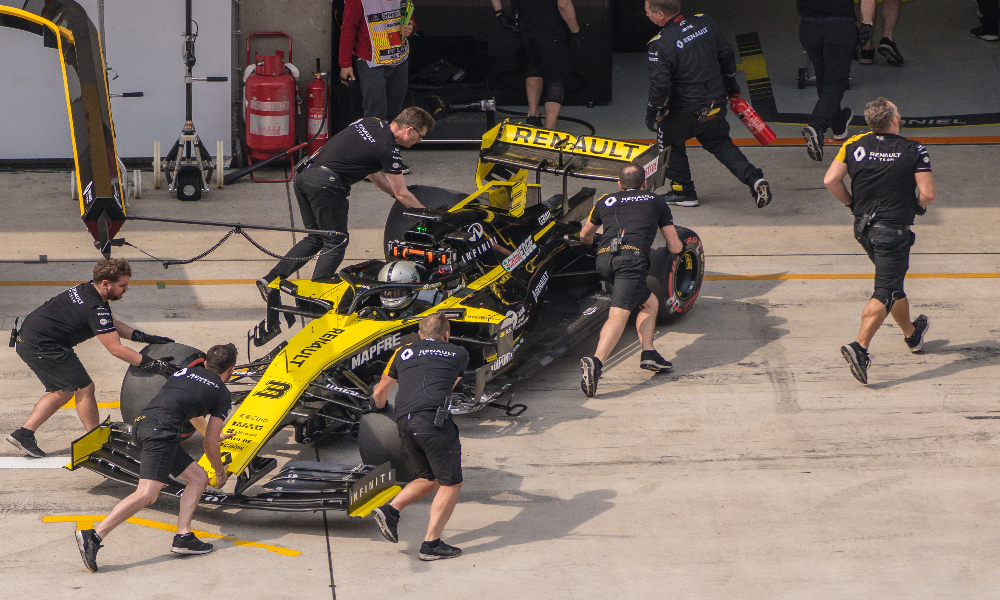What makes an exceptional team? As the management guru Patrick Lencioni says in his 2002 book, The Five Dysfunctions of a Team, “Not finance. Not strategy. Not technology. It is teamwork that remains the ultimate competitive advantage, both because it is so powerful and so rare.” So how functional is your team? Could you do better?

Is your team dysfunctional?
Lencioni identifies what he calls the five common dysfunctions of a team:
- Inattention to results – Status and ego
- Avoidance of accountability – Low standards
- Lack of commitment – Ambiguity
- Fear of conflict – Artificial harmony
- Absence of trust – Invulnerability
You probably recognise at least one of the above. Most of us do! But how do we address them to make teams work better? The results from four particular pieces of research can help you redress the five dysfunctions:
- Google’s two-year research project – Project Aristotle.
- Martine Haas & Mark Mortensens’ research published as ‘The Secrets of Great Teamwork’ (Harvard Business Review 2016) – Over the past 15 years nine large research projects have taken place in global organizations, carrying out more than 300 interviews and 4,200 surveys with team leaders and managers over 15 years.
- Sandy Pentland’s work on what he calls ‘The New Science of Building Teams’ (Harvard Business Review, 2012)
- Fredrickson and Losada’s work on behavioural ratios.
Project Aristotle – What Google discovered about great teams
After years of analysing data and interviews from more than 180 teams across the company, Google found that the kinds of people who work in a team, the individual personalities, are not so relevant.
“We had lots of data, but there was nothing showing that a mix of specific personality types or skills or backgrounds made any difference. The ‘who’ part of the equation didn’t seem to matter,” they said in an interview with The New York Times. Google concluded it didn’t matter much who was on the team, but how they worked together was vital. They concluded that the norms the teams valued and lived by were crucial, and identified five key dynamics in particular. Here they are, in order of importance:

- Psychological safety – Can we take risks on this team without feeling insecure or embarrassed?
- Dependability – Can we count on each other to do high-quality work on time?
- Structure and clarity – Are the goals, roles, and execution plans of our team clear?
- Meaning of work – Are we working on something that is personally important for each of us?
- Impact of work – Do we fundamentally believe that the work we’re doing matters?
Psychological safety was by far the most important element. Here’s what Google says about it:
“What Project Aristotle has taught people within Google is that no one wants to put on a ʻwork face’ when they get to the office. No one wants to leave part of their personality and inner life at home. But to be fully present at work, to feel psychologically safe,’ we must know that we can be free enough, sometimes, to share the things that scare us without fear of recriminations. We must be able to talk about what is messy or sad, to have hard conversations with colleagues who are driving us crazy. We can’t be focused just on efficiency.”
Two things contribute to what they called ‘equality in conversational turn-taking’ and ‘ostentatious listening’ – really listening to each other and demonstrating your listening via active behaviours like being curious, using positive body-language, not being glued to an iPad and so on. If you’d like to know more, Charles Duhigg has described these finds in an excellent video below:
Martine Haas & Mark Mortensens’ book – The Secrets of Great Teamwork
Haas and Mortensen found that the key takeaway for leaders is that although teams face an increasingly complicated set of challenges, a relatively small number of factors have an unusually dramatic impact on their success. “Managers can achieve big returns when they understand what these factors are and focus on getting them right.”
These enabling conditions are the climates in which diverse teams – also called 4-D teams – thrive. They’re not just diverse, they’re also dispersed, digital and dynamic, and that helps them achieve great things.
- Compelling direction – “The foundation of every great team is a direction that energizes, orients, and engages its members.”
- Strong structure – “High-performing teams include members with a balance of skill … where the team needs a healthy dose of superlative technical and social skills.”
- Supportive context – “This includes maintaining a reward system that reinforces good performance, an information system that provides access to the data needed for the work, and an educational system that offers training, and last—but not least—securing the material resources required to do the job, such as funding and technological assistance.”
- Shared mindset – “Our research indicates that today’s teams need … distance and diversity, as well as digital communication and changing membership, make them especially prone to the problems of ‘us versus them’ thinking and incomplete information. To achieve this, develop a shared mindset among team members by fostering a common identity and understanding.”
Sandy Pentland’s thrilling ‘New Science of Building Teams’

“When we set out to document the behaviour of teams that click, we noticed we could sense a buzz in a team even if we didn’t understand what the members were talking about. That suggested that the key to high performance lay not in the content of a team’s discussions but in the manner in which it was communicating.”
In Pentland’s opinion, successful teams share several defining characteristics:
- Everyone on the team talks and listens in roughly equal measure, keeping contributions short and sweet.
- Members face one another, and their conversations and gestures are energetic.
- Members connect directly with one another, not just with the team leader.
- Members carry on back-channel or side conversations within the team.
- Members periodically break, go exploring outside the team, and bring information back.
The data also established another surprising fact, that individual reasoning and talent contribute far less to team success than one might expect. The best way to build a great team is not to select individuals for their smarts or accomplishments but to learn how they communicate, then shape and guide the team so that it follows successful communication patterns.
The research identified three aspects of communication that affect team performance:
- Energy, which is measured by the number and nature of exchanges between team members.
- Engagement, which reflects the distribution of energy among the team members.
- Exploration, the communications members engage in outside their team, essentially the energy between a team and the other teams it interacts with.
Fredrickson and Losadas’ three key findings
In 2004, Professor Marcial Losada and Barbara Fredrickson showed that top performing business teams do three things that distinguish them from lower performing teams, and these three things lead to all the other things that deliver great results.
- Team members show as much interest in other people as they do in themselves and vice versa – a Self : Other behavioural ratio of roughly 1:1. By contrast, low performing teams only show a thirtieth as much interest in others as they do in themselves.
- Team members ask as many questions as they advocate their opinions, and vice versa – an Inquiry : Advocacy behavioural ratio of about 1:1. Low performing teams only ask one question for every twenty times they advocate their opinion.
- Team members have a Positivity Ratio of at least 3:1, making three times as many positive as negative comments to each other, often six times as many, sometimes as much as eleven times as many. Poor teams make more negative comments than positive.
These three simple interconnected keys to sustained team performance are all equally important. If you’d like to read further, take a look at Fredrickson, B. L. (2013, July 15). ‘Updated Thinking on Positivity Ratios’ in American Psychologist magazine.
Fredrickson and Losadas’ three key findings

Study all four examples and you can see a pattern emerging. The best-performing teams:
- Feel safe to take risks
- Depend on each other
- Allow each other equal air time
- Have clear goals
- Work on something meaningful
- Share the same direction
- Have a good balance of skills
- Are supported by the right tech, data, system and overall context
- Share the same mindset
- Are genuinely interested in each other
- Are energetic, engaged and positive
- Are happy to explore for fresh ideas outside the team
How’s your team doing against these critical benchmarks?
If your team isn’t quite hitting the mark and you’d like some support getting it right, we’ll be pleased to help you hone your teamwork skills. Get in touch
About us:
We create the space for leaders to step back, think clearly, and navigate complexity with confidence. By sharpening the narrative that drives decisions, teams, and performance, we help leaders move forward with clarity and impact. Our approach blends deep listening, incisive challenge, and commercial focus—strengthening leadership at every level, from business transformation to boardroom decisions.
“We share resources that help coaches deepen their practice and expand their impact. The articles on this site are designed to spark fresh thinking, offer practical tools, and support the continuous growth of coaches at every stage. “
Jude Elliman
Founder
Our Core Approach:
We work with leaders to sharpen their thinking, strengthen their leadership, and navigate complexity with confidence. Our approach is built around three core areas:
Narrative Coaching – Working with the stories that shape leadership, teams, and organisations.
Commercial Focus – Cutting through complexity to drive clear, strategic decisions.
Challenge & Space – Asking the right questions while creating the space to reflect and grow.
Through this, we help leaders drive transformation, align teams, and make high-stakes decisions with clarity and impact.
